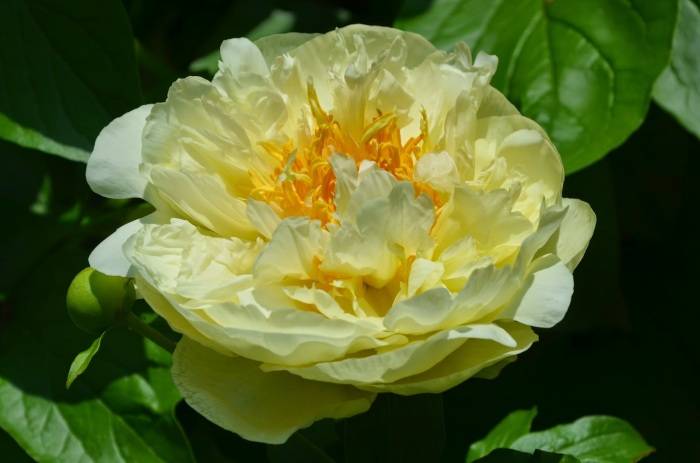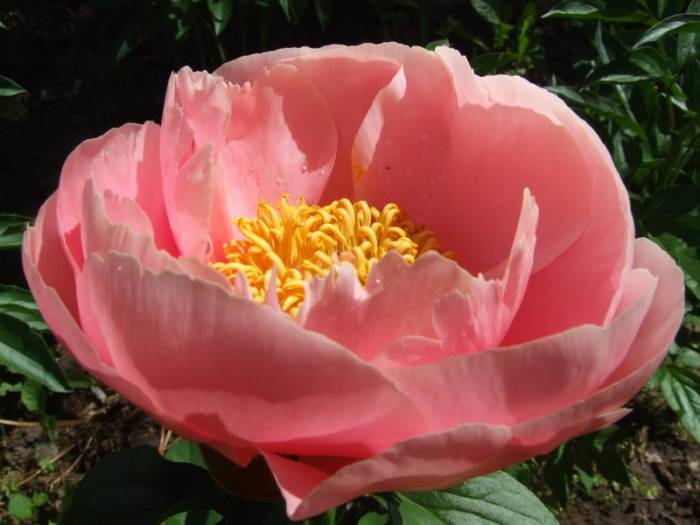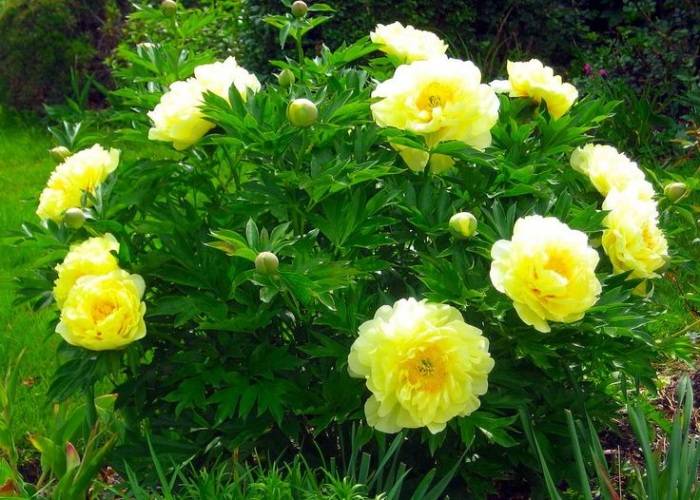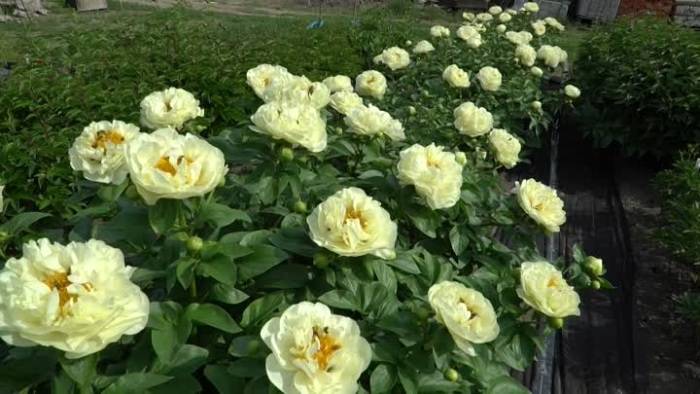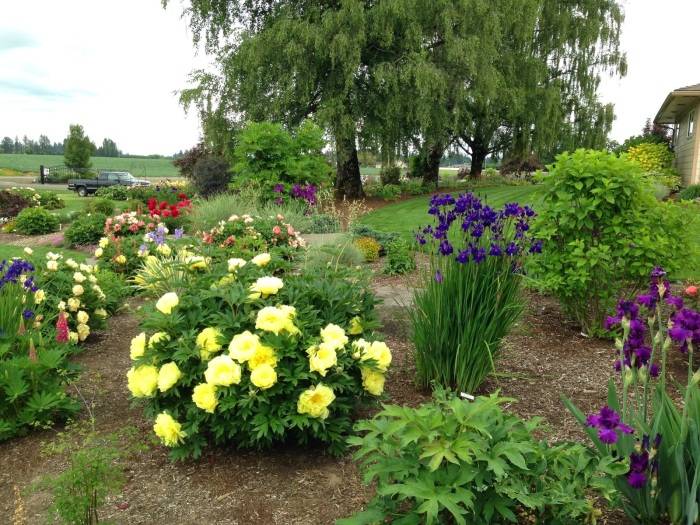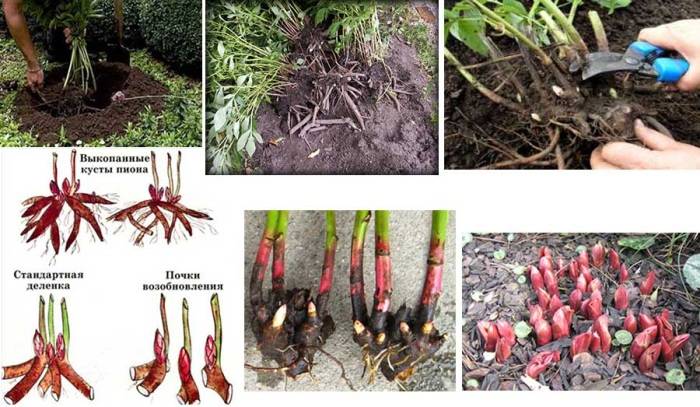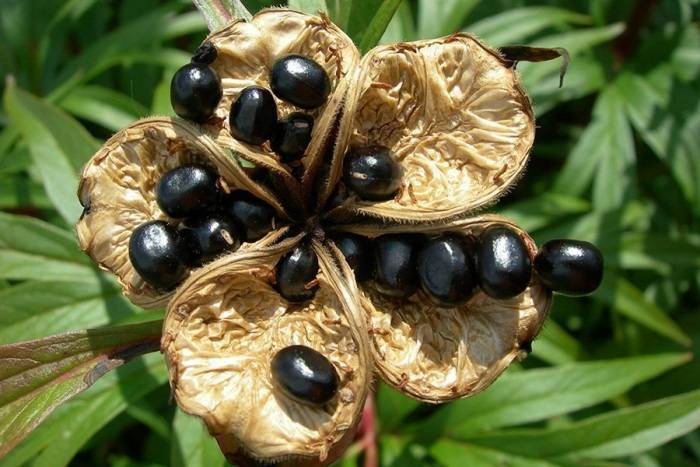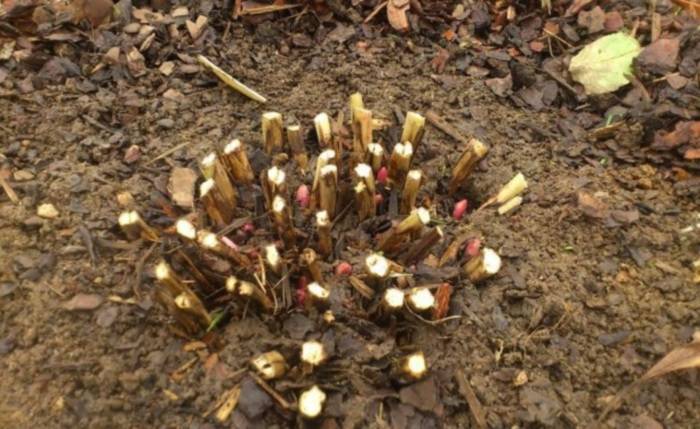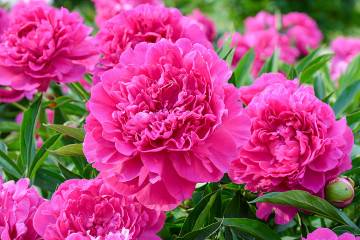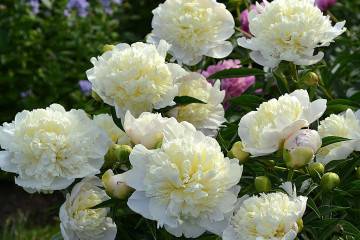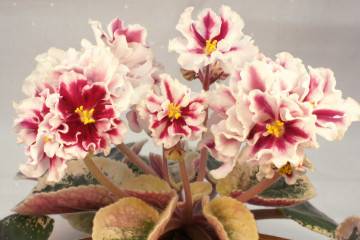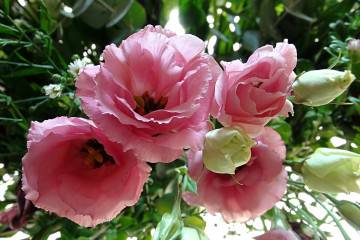Peony Lemon Chiffon (Paeonia Lemon Chiffon)
Content:
Lemon peonies are a real garden decoration. And their unpretentious care and resistance to disease deserve special praise. Below is considered in detail such a variety - Lemon Schiffer.
Peony Lemon Chiffon (Paeonia Lemon Chiffon) - what is this variety
"Lemon chiffon", and this is how the name of this peony is translated, belongs to the most successful varieties of Dutch selection. Named for the similarity of yellow petals with delicate chiffon fabric.
It was withdrawn in 1981, at the same time the first description was given. The basis for crossing was:
- milky white Moonrise;
- yellowish Cream Delight;
- soft salmon Salmon Dream.
Such breeders as N. Daphnis, D. Riet, V. Gratwick, A. P. Saunderson worked on the variety.
Brief description and characteristics
Refers to interspecific herbaceous hybrids. Stems reach 80-100 cm in height. Rhizomes are powerful.
Leaves of a deep green shade of oval-pointed shape, they are dense, even fleshy. Young foliage is dark red, but gradually it changes to green. In winter, the leaves die off.
The flowers are large, they reach 23 cm in diameter. The shade of the petals ranges from yellowish cream to pale lemon.
The stigma of the pistil is purple. Stamens are sunny yellow. When opened, the flower is lighter, almost white; towards the end of flowering, the shade becomes richer. Pale pink spots on the petals are acceptable. The delicate petals feel like chiffon fabric to the touch.
Flowering occurs at the end of May - beginning of June, that is, the variety is medium-early. After flowering, seed pods ripen.
Advantages and disadvantages of the variety
The undoubted advantages include:
- large showy flowers that everyone pays attention to;
- abundant flowering, up to 3 flowers can develop on one stem;
- high frost resistance (zone 3-4), therefore it can be grown in almost any region of Russia, with the exception of the Far North. According to the description of breeders, it does not freeze even at -45 ° C;
- the stems are so strong that they do not need support;
- the bush is neat, compact, does not fall apart in all directions.
Disadvantages:
- sensitive to light, if planted in the shade, then there will be almost no flowers;
- does not tolerate stagnant moisture.
Use in landscape design
Application in landscape design is universal. Lemon Chiffon is good both in a flowerbed in a mix with other plants, and as a border. You can form a spectacular monoclumba from it.
Bright flowers of blue, violet, purple and lilac shades are well suited for companions for these peonies: blue lobelia, bush clematis, foxglove, irises.
Lemon peonies form a beautiful border around the velvet green lawn.
Some designers recommend planting peonies against the background of conifers, especially blue spruces. But most often, beautiful bouquets are formed from the flowers of this variety.
Growing a flower
Paeonia lemon chiffon is easy to care for and reproduces well in various ways.
Planting by root cuttings
The most popular breeding method for this variety is by cuttings with buds and roots. At least 80% of such planting material takes root.
To propagate the lemon chiffon peony in this way, you need:
- Dig out a bush, shake off the roots from the ground, and then rinse.
- With a pruner or knife and divide the root system of the dug out bush into several cuttings, which have roots up to several centimeters long and at least 2-3 buds of renewal. There is a lot of planting material.
What time is the boarding
The division of the rhizome is carried out in the fall, then the cuttings are planted. Only well-rooted cuttings will survive frost. This will take at least a month. Therefore, the division of the bush is carried out no later than mid-September.
Seat selection
Peony Lemon Chiffon will grow and bloom only in a well-lit area, shade and partial shade are unacceptable.
The soil should be light, well-drained.
How to prepare the soil and flower for planting
For planting, you need to ensure the required pH level of the soil. For peony Lemon Chiffon, it ranges from 5.5 to 7.
For the prevention of diseases, rhizomes are treated with a pale pink solution of potassium permanganate.
Planting procedure step by step
Step-by-step planting procedure:
- Prepare a hole 50 cm deep. The diameter is chosen depending on the development of the root system of the seedling.
- At the bottom of the hole, lay a layer of finely broken brick or expanded clay with a fraction of 10-20 mm.
- Sprinkle the drain with a thin layer of sand.
- Make soil from a mixture of garden soil, peat, ash and sawdust with the addition of manure (must be rotted, otherwise the roots will burn).
- Pour half of the fertile mixture into the hole, place the seedling in the center, pour water over it.
- Add the rest of the soil and tamp.
Planting with seeds (for breeding)
The collection of seeds is carried out when the peony seed pod ripens and cracks, somewhere at the end of August.
For breeding, experts recommend seed reproduction. It is better to carry out this procedure in a greenhouse. You need to start with the stratification of seeds, that is, keeping them in a humid environment at a low temperature for up to 2 months.
Then the inoculum is soaked for two days with the addition of a stimulant. Peonies are sown in fertile soil under a glass dome.
Germination will take 3-4 weeks. When 3-4 leaves appear, the shelter is periodically removed for ventilation.
Seedlings can be transplanted into open ground no earlier than two years later.
Lemon Chiffon Care
Even a beginner can handle Lemon Chiffon care.
Watering and feeding
Lemon Chiffon is a moderately moisture-loving variety. Water as the topsoil dries up. It is not necessary to fill in the peonies, otherwise they may die.
In spring and autumn, a nitrogen-phosphorus mixture is introduced.
Mulching and loosening
Since the peony prefers light soil, loosening should be done regularly.
Mulching can be done in spring. In this case, only rotted manure is used as mulch.
Preventive treatment
Peony Lemon Chiffon does not require regular pruning. The exception is young seedlings, from which unopened buds must be removed so that they do not pull strength from the bush.
Peony Blossom Lemon Chiffon
The variety blooms beautifully and profusely, but only under the conditions of care.
A period of activity and rest
The active growing season for peonies begins in early spring and continues until the end of flowering. After flowering, a dormant period begins.
Care during and after flowering
During flowering, you need to provide more intensive watering than during the dormant period. In this case, the soil should be regularly loosened. You can feed with phosphorus-potassium fertilizers, but it is important not to overdo it, otherwise you can achieve the opposite effect.
What to do if it does not bloom
Common reasons for the lack of flowering in peonies are:
- stagnant moisture. In this case, reduce watering;
- placement in the shade. In the fall, they are transplanted to a more illuminated place;
- the age of the bush. When planted by cuttings, Lemon Chiffon will bloom only in the 2nd year, and when propagated by seeds - already in the 5th;
- excess nitrogen fertilization when too much green mass is formed;
- the plant has aged. In this case, the bush is divided and transplanted to another place;
- lack of potassium. Additional feeding is required;
- the soil pH level is more than 7. With the help of lime it must be reduced to 6.5;
- the plant was struck by gray rot. Treatment with fungicides is required;
- the roots are damaged by pests (nematodes or rodents). Digging and inspection is indispensable. If the bush is hit by nematodes, then it needs to be destroyed.
Peonies after flowering
To ensure abundant flowering for the next year and the long life of the plant, you need to follow certain rules of care during the dormant period.
Transfer
Peonies can be transplanted both in spring and autumn. But after winter, this should only be done if absolutely necessary. Plants will experience much less stress when transplanting in September, when they have stocked up on nutrients and are at rest. Before winter, they will have time to take root in a new place.
Pruning
Experienced gardeners recommend be sure to carry out the autumn pruning of Lemon Chiffon peonies. It helps plants recover effectively after flowering and accumulate sufficient moisture before wintering.
The stems above the growth buds are left 4-5 cm, the rest is removed. Other stems are cut to the very root. Places of cuts and the soil around are sprinkled with wood ash. This is nutrition and disinfection.
Preparing for winter
It is not necessary to dig up or specially wrap this frost-resistant variety. But mulching with peat and humus will prevent the plant from freezing and additionally feed the soil. In early spring, the mulch is harvested.
Diseases, pests and ways to control them
The main pests include:
- fungal disease gray rot, which often affects flowers that have not yet blossomed. For treatment, fungicides are used;
- spider mites and ants against which insecticides are effective.
The rest of the pests and diseases bypass the Lemon Chiffon side.
Thus, this variety blooms profusely with lemon yellow double and semi-double flowers. It is undemanding in leaving, frost-resistant and photophilous. Suitable for a beginner, but quite expensive.
